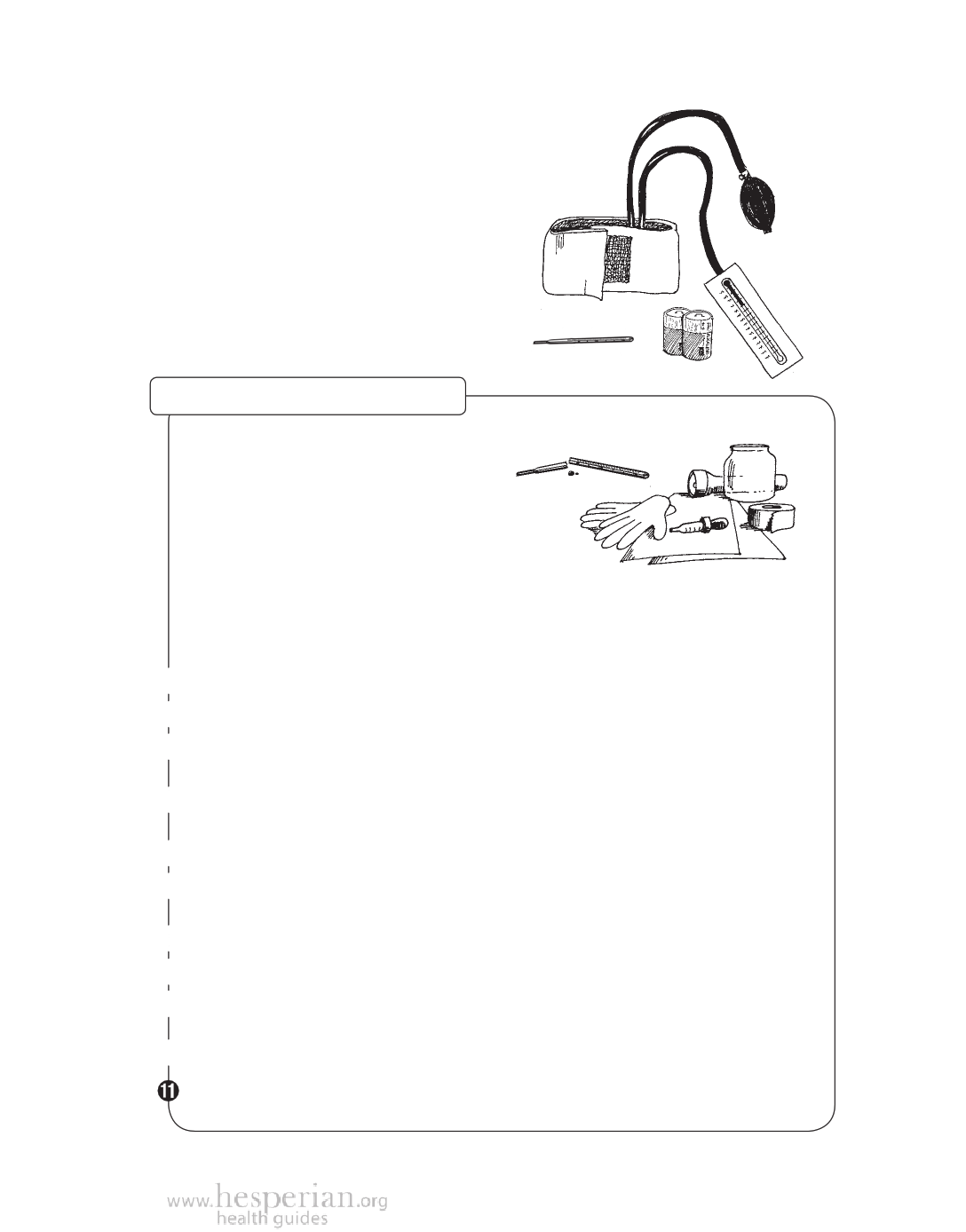
Safe Disposal of Chemical Wastes 441
The best way to reduce harm from mercury is to
use as few mercury-containing items as possible.
If possible, keep equipment with mercury on
metal trays, so if it breaks the mercury
will not soak into wood surfaces like
tables or floors. Use non-mercury
thermometers if they are available
in your area (see Resources).
How to clean up a mercury spill
When a thermometer or other item
containing mercury breaks, the
mercury scatters as small pieces.
Keep people and animals away from
the spill area. Turn off any heaters, fans, or
air conditioners, and open windows to let air
in. To clean up the spill you will need gloves, an
eyedropper, 2 pieces of stiff paper or cardboard,
2 plastic bags, sticky tape, a flashlight, and a glass container with water in it.
To collect the mercury safely:
➊ Do not touch the mercury. Open windows or doors.
➋ Remove watches and jewelry. Mercury sticks to other metals.
➌ Shine a flashlight on the area to make the mercury easier to see, even during
the daytime.
➍ Wear chemical resistant gloves if possible. If you have only latex gloves, wear
at least 2 pairs.
➎ Use small pieces of stiff paper or cardboard to gather the mercury into a small pile.
➏ Use an eyedropper to suction up the mercury beads, and put the mercury in a glass
container with water.
➐ Pick up any mercury that is left using sticky tape.
➑ Place sticky tape, eyedropper, gloves, and cardboard in a plastic bag.
➒ Label the bag “mercury waste” and put the bag in the glass container with the
water in it.
➓ Seal and mark the container. Put it inside another plastic bag.
Dispose of it as toxic waste (see page 410).
A Community Guide to Environmental Health 2012